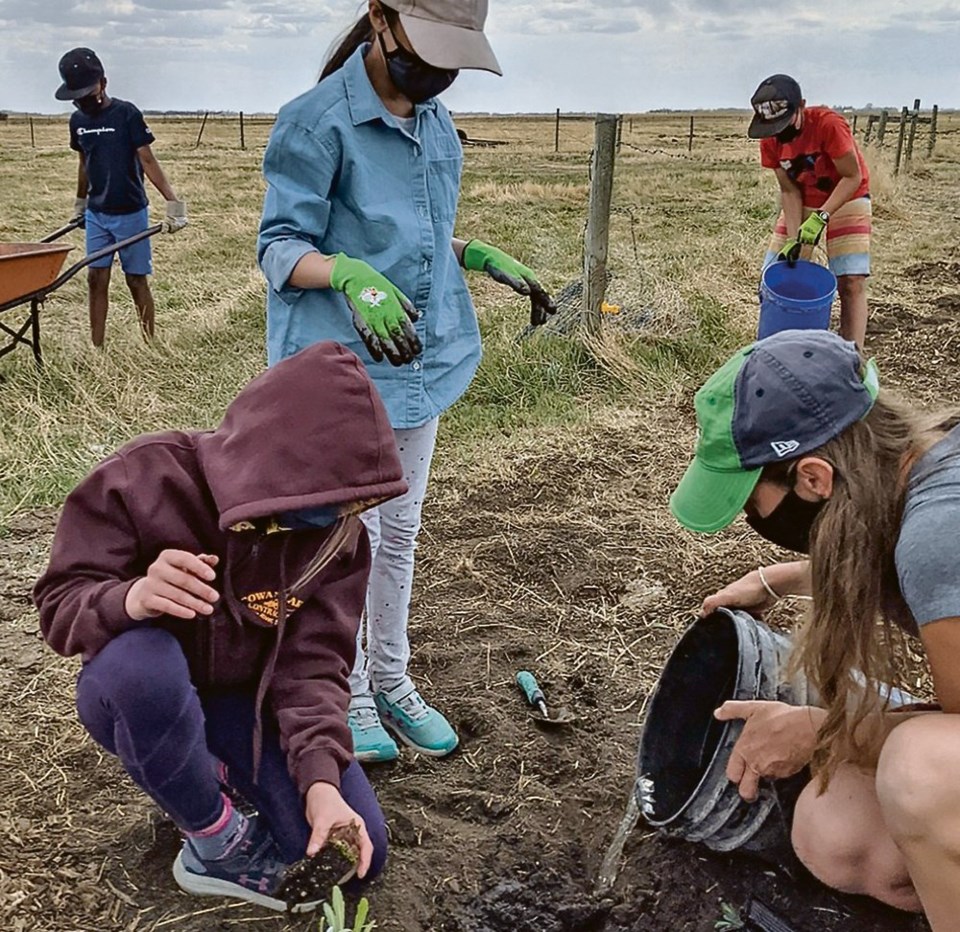SASKATOON — It’s fitting that Elizabeth Bekolay’s initiative, One School One Farm, obtained its charitable status on Earth Day last month.
Connecting urban students with rural landowners is a passion of hers and what better day to celebrate?
The biologist, who teaches at Saskatoon Public School’s outdoor school south of the city, said the idea to make these connections came to her in “a vision.”
She was a kid who always wanted to be outside exploring nature. As an adult, working as an outdoor ecological educator, she pays close attention to biodiversity and ecosystems.
“Since about 2005, I’ve been studying prairie remnant systems pretty intensely,” she said.
The food system, while obviously necessary, has also been the cause of lost native prairie.
But how to bring that habitat back?
In 2018, she established a board and began planning for pilot projects. The COVID-19 pandemic delayed them, but in spring 2021 the first two went ahead. They include students from Victoria School and Walter Murray high school and landowners that Bekolay said heard about the project and volunteered to participate.
The projects focus on establishing either bluff plantings or prairie strips on land that the landowners have decided need vegetation.
They aren’t necessarily farmers.
“We’re calling them land stewards,” Bekolay said. “They have land and they want to do something that benefits nature.
“They have to give in order to receive. They have to give their time to the class, to give a tour of the area, a bit of a history of the area. They plan together with the students what they’re going to do to increase biodiversity and sequester carbon on the site.”
ADVERTISEMENT
The plantings include native species of trees, shrubs, grasses and flowers. The idea is to draw beneficial insects and pest predators to the area.
“When we started, we kind of just let the students and land stewards go for it,” Bekolay said. But then drought hit and there was a huge learning curve as participants saw which species survived and which didn’t.
Bekolay also does ecological and garden design and restoration work and now will provide a list of possible species to choose for a particular site.
This isn’t as simple as planting rows of taller species in the back and shorter in the front. The plantings are complex and use hardy native species to rebuild soil and provide habitat.
The bluff plantings are about eight metres across and circular, focusing on how native poplars grow. Bekolay said native polars grow this way and can live for thousands of years.
The eco-buffers or strips are nine-by-13 metre sections that can be added to over time.
The students involved so far have ranged from Grades 6 to 11. Bekolay said they have been happy, messy kids by the end of the planting days.
“Some are planning to camp out this year. They want to feel like they’re kind of connected to that spot and learning about the soils in the area and why we chose the plants that we did,” she said.
One planting was done last fall and students will return again this spring to do more.
Projects this spring are planned for the Aberdeen and Lumsden areas.
Bekolay said the idea is that year after year teachers will return to the sites with students. The plantings are designed to be self-reproducing as they would be in nature and to create a seed source for other projects. Others will see new sections planted.
The charitable status will help the program obtain more funds. It will be on the Canada Helps platform.
Bekolay said they have done a few small fundraisers, but some schools and land stewards are growing plants for them and they have also had some donations from organizations like the Saskatoon Nature Society and Eco-Cert. The latter is also helping with some of the planting this year.
Bekolay also said she understands why farmers have pulled out shelterbelts with no intention of planting more, even if she doesn’t agree with that.
“We’re going to have to figure it out,” she said of restoring biodiversity and habitat. “We’re beyond the point of losing any more biodiversity and the idea that yes, stubble is great, but you need plants to send water back up into the sky. And how much percentage of our rain comes from transpiration on the Prairies is huge because we don’t have a lot of evaporation from surface water.”
For more information, contact Bekolay at [email protected].




